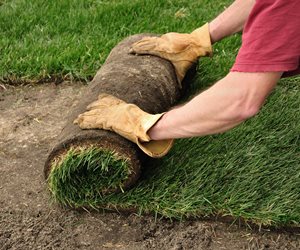Which Is Better: Seed or Sod?
The pros and cons of each lawn planting methodHomeowners often ask which lawn is better: one grown from seed or sod? The short answer is that all sod lawns start from seed (except for warm-season grasses that are grown from stolons). All cool-season sod lawns are planted by seed, and after they mature in 3 to 4 months, they are harvested by knife and shipped to your door for installation.
You can plant your own lawn from seed too. The difference is that at the sod farm, the fields are professionally managed with weed controls and fertilizer programs that ensure a weed-free healthy lawn. You can save money by seeding your own lawn, but if you do so, be prepared for extra maintenance and weed control in the first season. Seeding often becomes more worthwhile as the square footage increases.
Most warm-season grasses don't grow from seed (referred to as stoloniferous), and must be planted by sod or hand planting of stolons - small cuttings from growing shoots of the turf. These grasses, which include common Bermuda, hybrid Bermudas, kikuyu, zoysia, and St. Augustine, fill in damaged lawn areas by sending out runners from unaffected adjacent areas. Warm-season lawns are extremely hardy and repair rapidly from heavy foot traffic, dog urine, and animal grazing.

 Backyards
Backyards
 Front Yards
Front Yards



